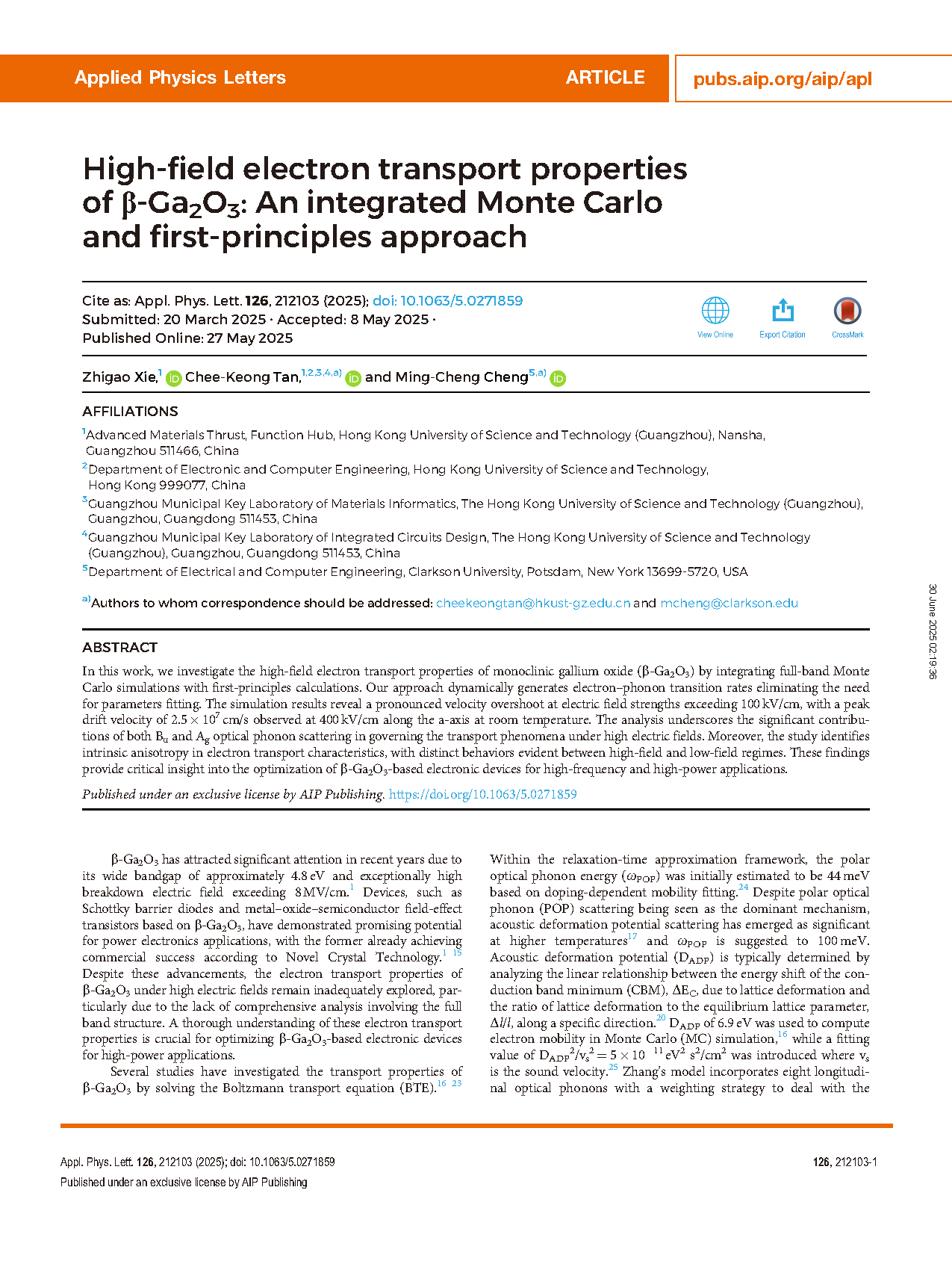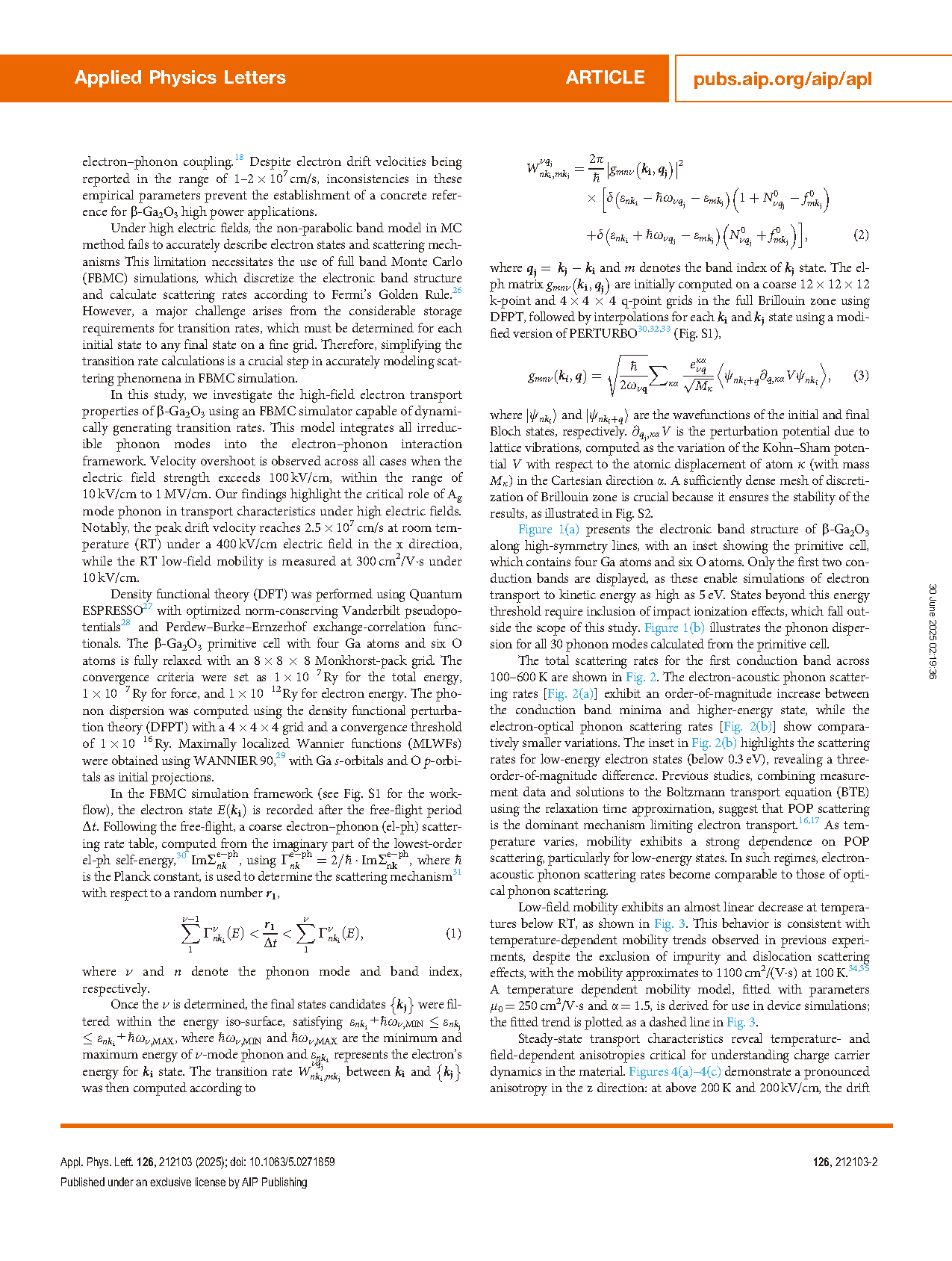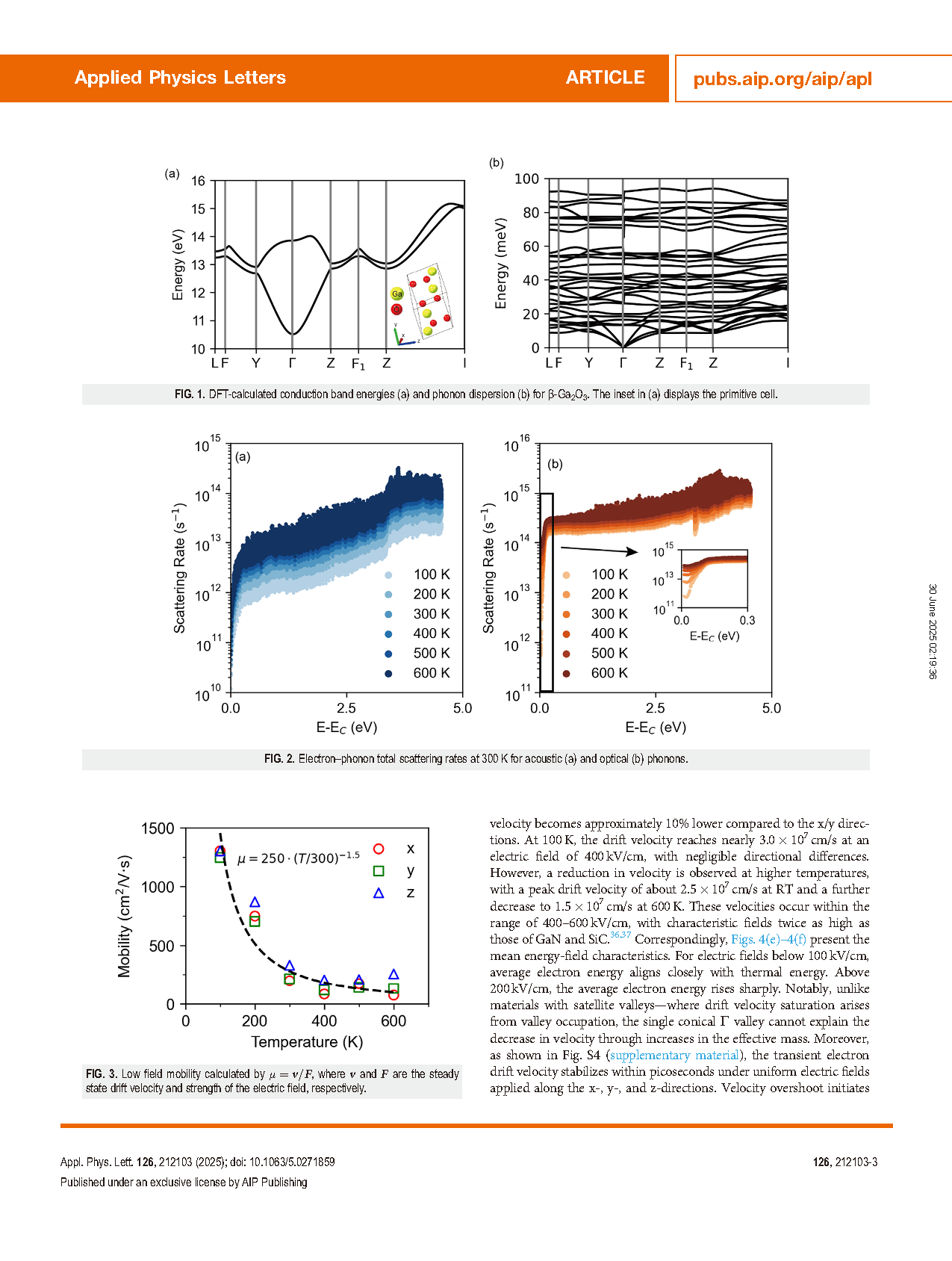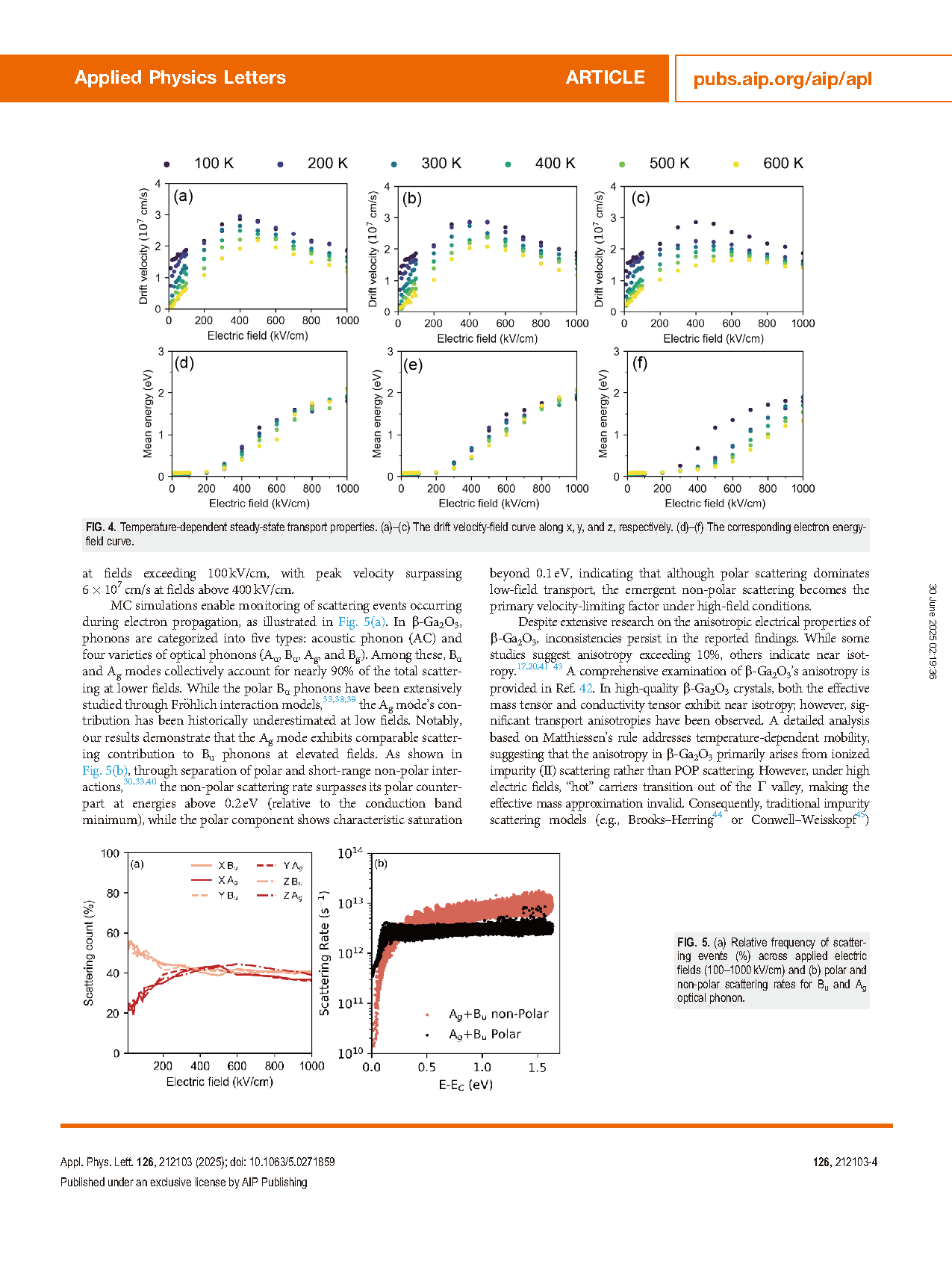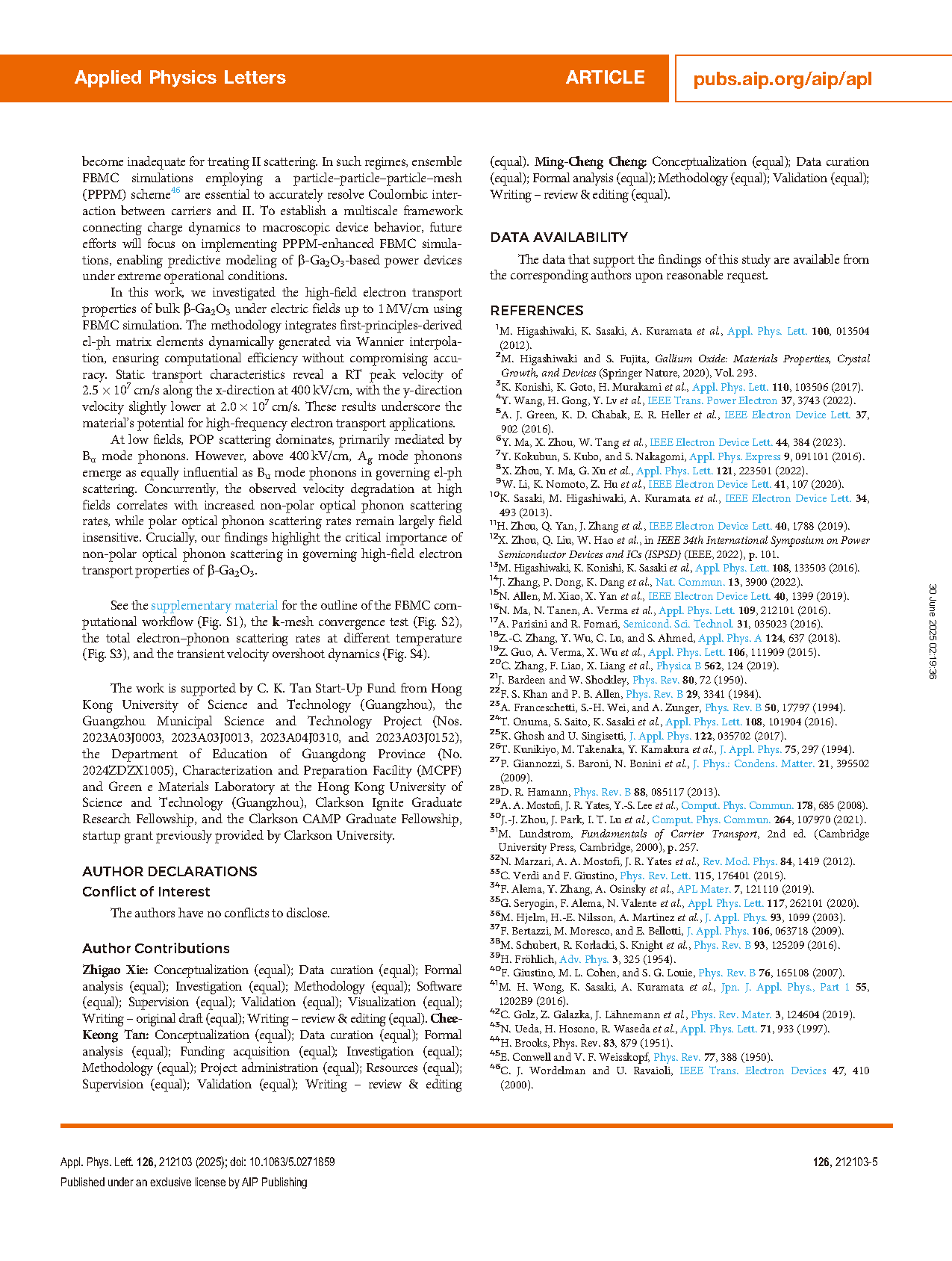
【Member Papers】High-field electron transport properties of β-Ga₂O₃: An integrated Monte Carlo and first-principles approach
日期:2025-07-07阅读:250
Researchers from the Hong Kong University of Science and Technology (Guangzhou) have published a dissertation titled "High-field electron transport properties of β-Ga2O3: An integrated Monte Carlo and first-principles approach" in Applied Physics Letters.
Project Support
The work is supported by C. K. Tan Start-Up Fund from Hong Kong University of Science and Technology (Guangzhou), the Guangzhou Municipal Science and Technology Project (Nos. 2023A03J0003, 2023A03J0013, 2023A04J0310, and 2023A03J0152), the Department of Education of Guangdong Province (No. 2024ZDZX1005), Characterization and Preparation Facility (MCPF) and Green e Materials Laboratory at the Hong Kong University of Science and Technology (Guangzhou), Clarkson Ignite Graduate Research Fellowship, and the Clarkson CAMP Graduate Fellowship, startup grant previously provided by Clarkson University.
Background
β-Ga2O3 has attracted significant attention in recent years due to its wide bandgap of approximately 4.8 eV and exceptionally high breakdown electric field exceeding 8 MV/cm. Devices, such as Schottky barrier diodes and metal–oxide–semiconductor field-effect transistors based on β-Ga2O3, have demonstrated promising potential for power electronics applications, with the former already achieving commercial success according to Novel Crystal Technology. Despite these advancements, the electron transport properties of β-Ga2O3 under high electric fields remain inadequately explored, particularly due to the lack of comprehensive analysis involving the full band structure. A thorough understanding of these electron transport properties is crucial for optimizing β-Ga2O3-based electronic devices for high-power applications.
Abstract
In this work, we investigate the high-field electron transport properties of monoclinic gallium oxide (β-Ga2O3) by integrating full-band Monte Carlo simulations with first-principles calculations. Our approach dynamically generates electron–phonon transition rates eliminating the need for parameters fitting. The simulation results reveal a pronounced velocity overshoot at electric field strengths exceeding 100 kV/cm, with a peak drift velocity of 2.5 × 107 cm/s observed at 400 kV/cm along the a-axis at room temperature. The analysis underscores the significant contributions of both Bu and Ag optical phonon scattering in governing the transport phenomena under high electric fields. Moreover, the study identifies intrinsic anisotropy in electron transport characteristics, with distinct behaviors evident between high-field and low-field regimes. These findings provide critical insight into the optimization of β-Ga2O3-based electronic devices for high-frequency and high-power applications.
Conclusion
In this work, we investigated the high-field electron transport properties of bulk β-Ga2O3 under electric fields up to 1MV/cm using FBMC simulation. The methodology integrates first-principles-derived el-ph matrix elements dynamically generated via Wannier interpolation, ensuring computational efficiency without compromising accuracy. Static transport characteristics reveal a RT peak velocity of 2.5×107 cm/s along the x-direction at 400 kV/cm, with the y-direction velocity slightly lower at 2.0×107 cm/s. These results underscore the material’s potential for high-frequency electron transport applications.
At low fields, POP scattering dominates, primarily mediated by Bu mode phonons. However, above 400 kV/cm, Ag mode phonons emerge as equally influential as Bu mode phonons in governing el-ph scattering. Concurrently, the observed velocity degradation at high fields correlates with increased non-polar optical phonon scattering rates, while polar optical phonon scattering rates remain largely field insensitive. Crucially, our findings highlight the critical importance of non-polar optical phonon scattering in governing high-field electron transport properties of β-Ga2O3.
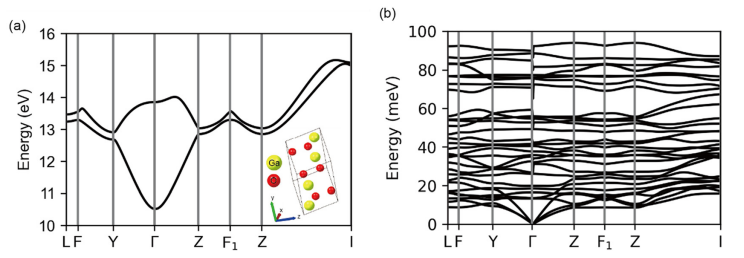
FIG. 1. DFT-calculated conduction band energies (a) and phonon dispersion (b) for β-Ga2O3. The inset in (a) displays the primitive cell.
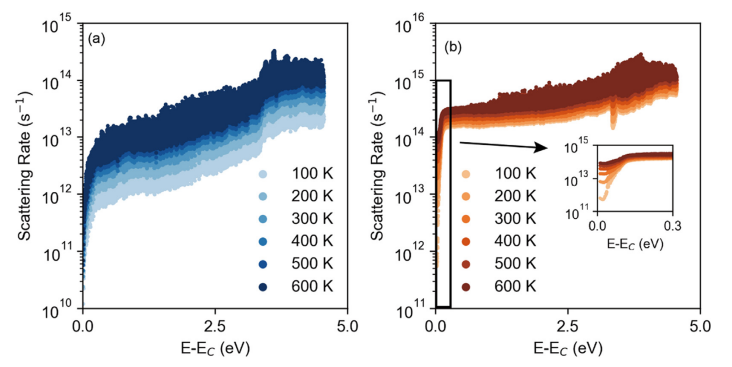
FIG. 2. Electron–phonon total scattering rates at 300 K for acoustic (a) and optical (b) phonons.
DOI:
doi.org/10.1063/5.0271859
